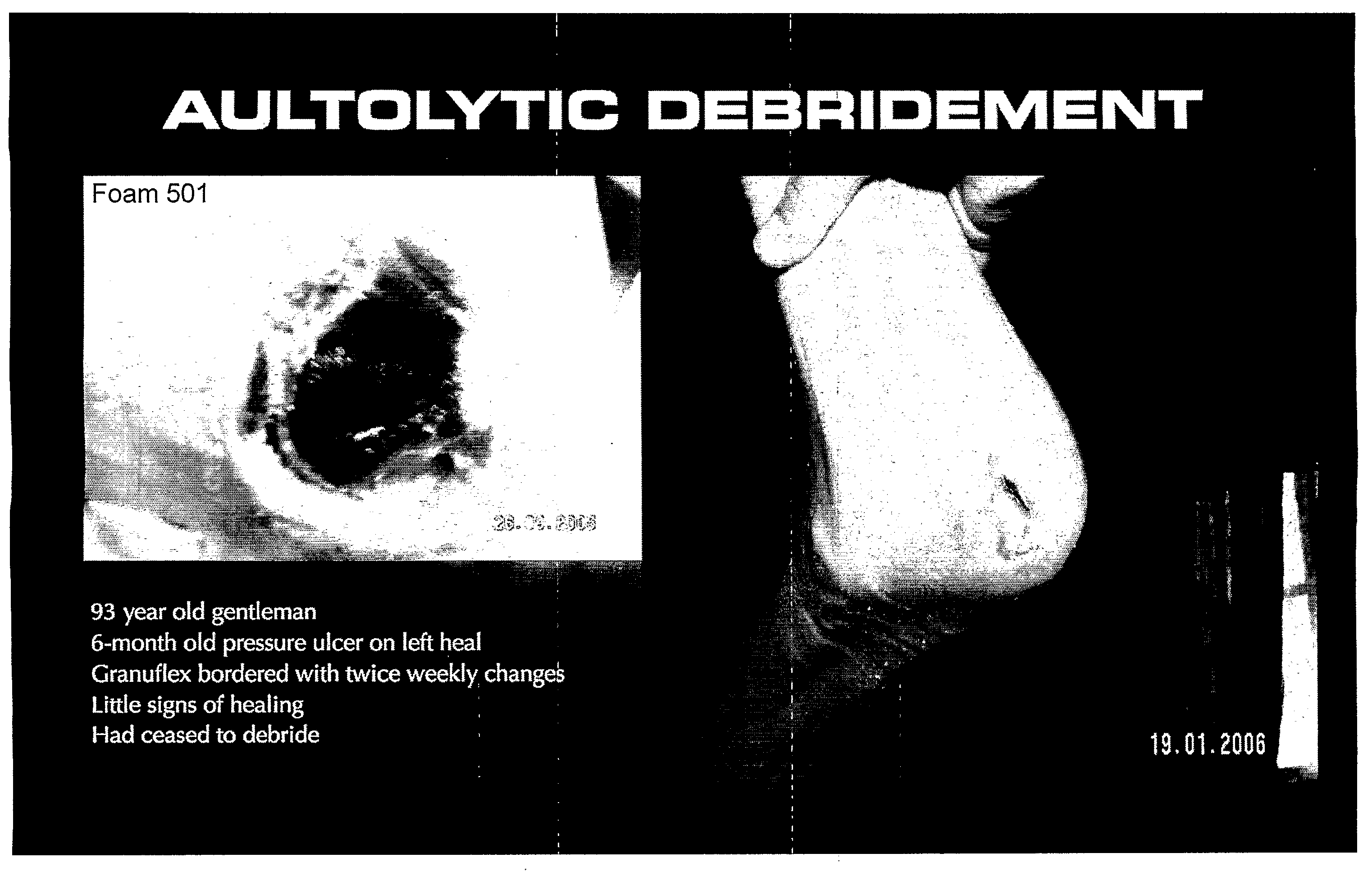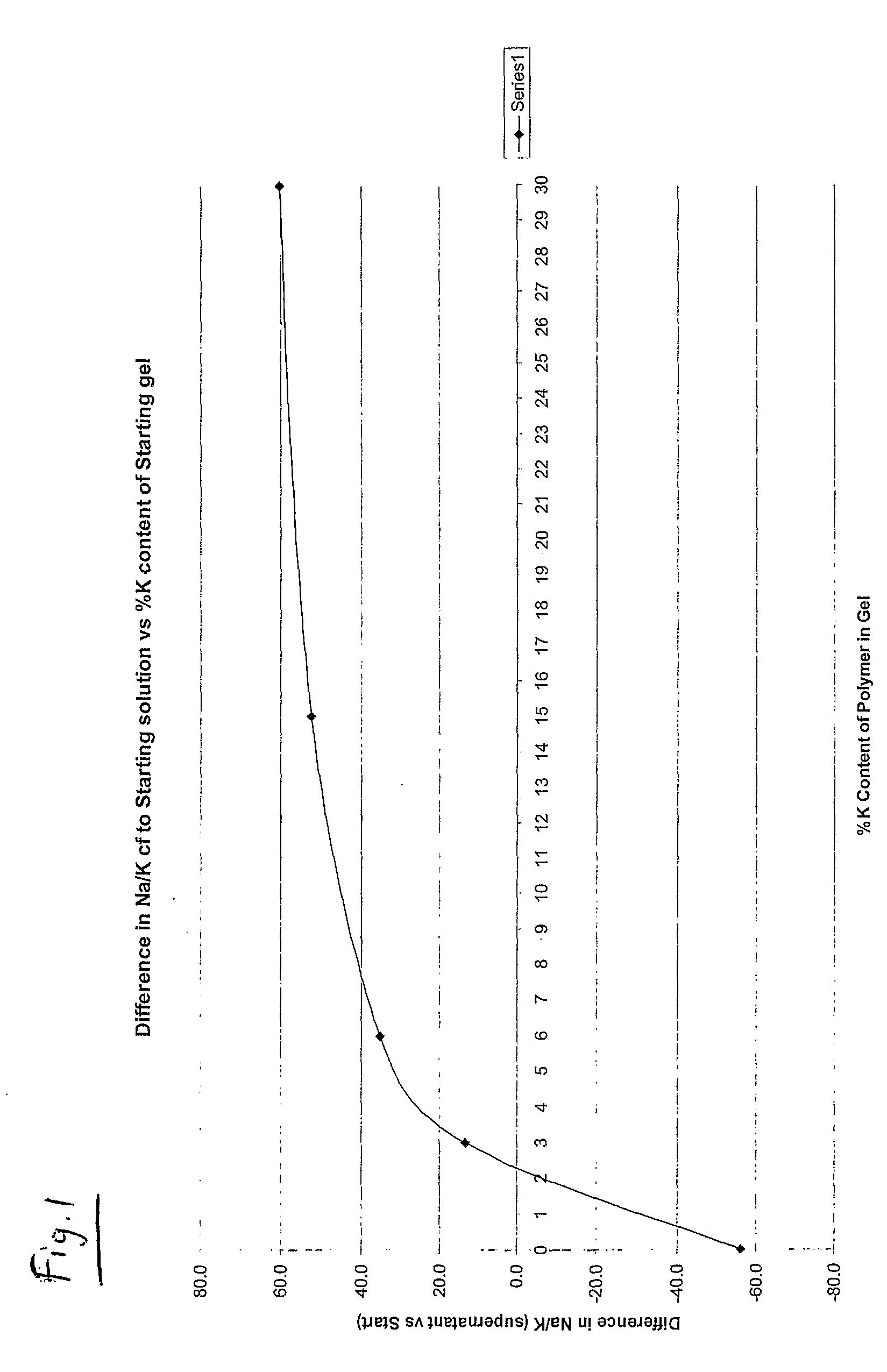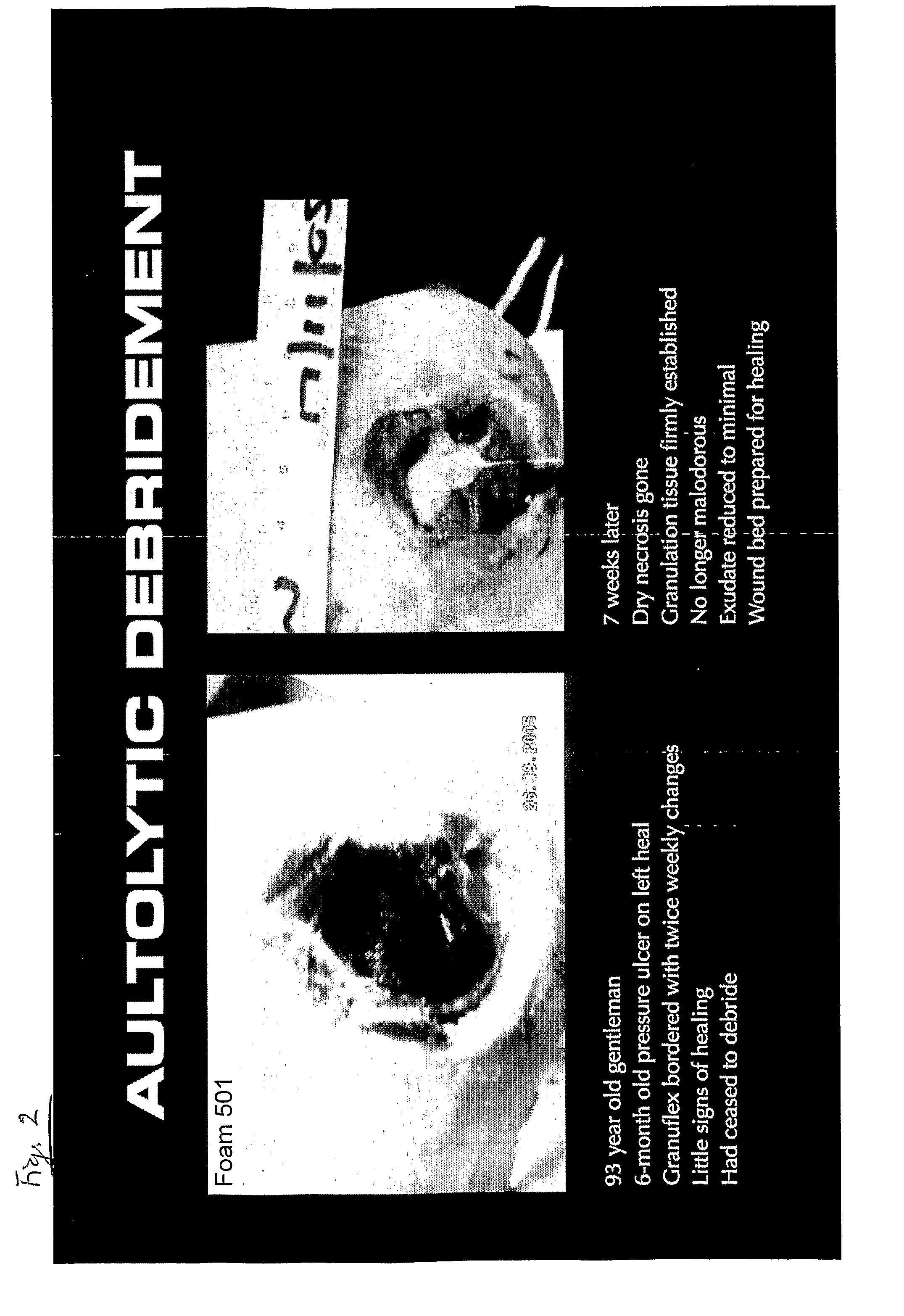Treatment of chronic ulcerous skin lesions
a skin lesions and chronic ulcer technology, applied in dermatological disorders, absorbent pads, medical science, etc., can solve the problems of affecting the quality of life of patients, requiring limb amputation or even death, and a particular difficult task for the caring professional attending to patients, so as to reduce the requirement of specific pain relief, reduce the requirement, and reduce the effect of pain
- Summary
- Abstract
- Description
- Claims
- Application Information
AI Technical Summary
Benefits of technology
Problems solved by technology
Method used
Image
Examples
examples 1 to 15
Hydrogel Compositions
[0212]Examples 1 to 15 illustrate suitable hydrogel composition which may be used with suitable sheet support members as described herein to provide a dressing for use in the present invention.
[0213]In these examples, each of the pre-gel formulations was cured as 0.3 to 2.6 kg per square metre coat weight by a medium pressure mercury arc lamp (GEW, UK).
example 1
[0214]Pre-gel: 70 parts by weight of 58% aqueous solution of the sodium salt of acrylamidomethylpropanesulphonic acid (Na AMPS, LZ2405 Lubrizol), 30 parts glycerol and 0.14 parts of a 1 to 10 (by weight) mixture of Daracure 1173 photoinitiator (Ciba Speciality Chemicals) and IRR280 cross-linker (PEG400 diacrylate, UCB Chemicals)
example 2
[0215]Pre-gel: 52 parts by weight of 58% aqueous solution of the sodium salt of acrylamidomethylpropanesulphonic acid (Na AMPS, LZ2405 Lubrizol), 48 parts water and 0.14 parts of a 1 to 10 (by weight) mixture of Daracure 1173 photoinitiator (Ciba Speciality Chemicals) and IRR280 cross-linker (PEG400 diacrylate, UCB Chemicals).
PUM
| Property | Measurement | Unit |
|---|---|---|
| Time | aaaaa | aaaaa |
| Volume | aaaaa | aaaaa |
| Volume | aaaaa | aaaaa |
Abstract
Description
Claims
Application Information
 Login to View More
Login to View More - R&D
- Intellectual Property
- Life Sciences
- Materials
- Tech Scout
- Unparalleled Data Quality
- Higher Quality Content
- 60% Fewer Hallucinations
Browse by: Latest US Patents, China's latest patents, Technical Efficacy Thesaurus, Application Domain, Technology Topic, Popular Technical Reports.
© 2025 PatSnap. All rights reserved.Legal|Privacy policy|Modern Slavery Act Transparency Statement|Sitemap|About US| Contact US: help@patsnap.com



